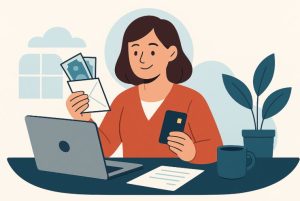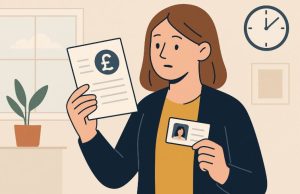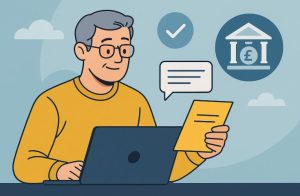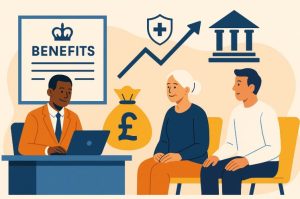Many across the UK have felt the pressure of rising living costs in recent years. For individuals and families already managing on limited incomes, every pound counts.
That’s why the Government introduced the £299 Cost of Living Payment, designed to offer targeted financial relief.
Whether you’re on Universal Credit, Pension Credit, or tax credits, this final instalment aimed to support those most in need during difficult times. Here’s everything to know about eligibility, payment dates, and more.
What is the DWP £299 Cost of Living Payment?

For millions across the UK, the cost of living crisis has been a constant strain. Rising prices on essentials like food, energy, and rent have pushed many families to the edge.
To help ease the burden, the UK Government introduced a series of Cost of Living Payments over the course of 2023 and 2024. The final instalment in this package was the £299 payment, issued by the Department for Work and Pensions (DWP).
This one-off £299 Cost of Living Payment was designed for people receiving means-tested benefits, including Universal Credit and Pension Credit. The payment was not a loan and did not affect any other government benefit or allowance the recipient received. Instead, it served as targeted support for those most in need during a time of economic stress.
The £299 amount marked the third and final part of the government’s wider £900 Cost of Living Payment package, distributed in three parts. The two earlier payments were £301 and £300, issued in Spring and Autumn 2023, respectively.
This final payment closed out the scheme in early 2024, offering financial relief just before rising utility bills and inflationary pressures typically intensify during the colder months.
Why is the Government Issuing the £299 Cost of Living Payment?
The rising cost of everyday living across the UK has affected nearly every household, but it has hit low-income individuals the hardest.
From surging energy bills to higher grocery prices, inflation has driven more people to rely on food banks and government support. Recognising this growing pressure, the UK Government stepped in with direct payments like the £299 Cost of Living Payment.
This payment was not a random gesture, but part of a calculated response to support vulnerable groups. It followed ongoing economic strain caused by the lingering impact of the COVID-19 pandemic, global supply chain issues, energy market instability, and inflation.
Targeting the Most Affected
The payment aimed to reach:
- People already receiving income-related benefits
- Households with lower disposable incomes
- Families struggling with energy bills and daily necessities
Unlike universal measures, this targeted approach ensured that public funds were directed to the people who needed them the most.
By linking payments to existing benefit claims, the DWP could deliver aid efficiently and directly to eligible recipients without requiring a separate application process.
Who Qualifies for the £299 Cost of Living Payment?

Eligibility for the £299 Cost of Living Payment was based on whether an individual was receiving specific means-tested benefits during a qualifying period. The Department for Work and Pensions set clear criteria to determine who could access this support.
Qualifying Benefits for DWP £299 Payment
To receive the payment, an individual needed to have been entitled to one of the following benefits between 8 January 2024 and 14 January 2024:
- Universal Credit
- Income-based Jobseeker’s Allowance (JSA)
- Income-related Employment and Support Allowance (ESA)
- Income Support
- Working Tax Credit
- Child Tax Credit
- Pension Credit
Those on new claims may also have qualified if their application for any of the above benefits was successful and backdated to fall within the qualifying period.
Exceptions and Conditions
People receiving only new-style ESA, new-style JSA, or contributory benefits without an income-related element were not eligible for this payment.
Additionally, if a household had joint claims, such as a couple receiving Universal Credit together, only one £299 payment was issued per claim, not per person.
When Was the £299 DWP Payment Issued?
The £299 Cost of Living Payment was issued between 6 February and 22 February 2024, providing a vital financial boost at the beginning of the year. This specific window allowed DWP and HMRC to complete staggered payments to millions of households, ensuring a manageable and secure delivery process.
Payment Timeline and Key Dates
| Payment Authority | Payment Dates | Benefits Covered |
| DWP | 6 to 22 February 2024 | Universal Credit, ESA, JSA, Income Support |
| HMRC | From 16 February 2024 | Working Tax Credit, Child Tax Credit |
DWP payments typically appeared with the reference “DWP COL”, while HMRC payments included the reference “HMRC COLS”. The actual date varied slightly depending on the individual’s benefit system and bank processing times.
How is the £299 Payment Made to Recipients?

Recipients of the £299 payment did not need to apply for it separately. Instead, payments were made automatically into the same bank accounts where their benefits were usually deposited.
Reference Codes
To help recipients identify the payment, specific reference codes were used:
- For DWP: “DWP COL”
- For HMRC: “HMRC COLS”
Account Verification
Payments appeared in the accounts of millions of eligible recipients during the scheduled dates. Anyone unsure about the payment could verify by checking their bank statements for the unique reference.
If a payment was not received but was expected, there were steps to report a missing payment to either DWP or HMRC, depending on which agency handled the individual’s benefits.
Which Benefits Are Required to Be Eligible?
Eligibility was strictly tied to income-based benefits. Below is a summarised table of qualifying benefits and who administers them:
| Benefit Name | Administered By | Payment Eligible? |
| Universal Credit | DWP | Yes |
| Income-based JSA | DWP | Yes |
| Income-related ESA | DWP | Yes |
| Income Support | DWP | Yes |
| Pension Credit | DWP | Yes |
| Working Tax Credit | HMRC | Yes |
| Child Tax Credit | HMRC | Yes |
| Contribution-based JSA/ESA | DWP | No |
Only income-related versions of ESA and JSA are qualified. Those on new-style or contribution-based versions were not eligible.
Can You Receive the Payment if You’re on Tax Credits?

Yes, individuals receiving only Working Tax Credit or Child Tax Credit qualified for the £299 payment, but with a slight delay compared to DWP-issued payments. These payments were processed and delivered by HM Revenue and Customs (HMRC) instead of the DWP.
Tax Credit Payment Timeline
Tax credit recipients started receiving their payments from 16 February 2024. The payments were typically made after DWP’s payment window had started, ensuring HMRC had time to verify eligibility based on tax credit data.
Those receiving both DWP and HMRC benefits had their payment issued via DWP, not duplicated. The reference used by HMRC was “HMRC COLS” in bank statements.
Is This the Final Cost of Living Payment from the DWP?
Yes, the £299 Cost of Living Payment was confirmed to be the final instalment in the government’s 2023/2024 support package. This payment followed the previous instalments of £301 and £300, which were issued in April and October 2023, respectively.
There has been no official confirmation from the Government regarding a similar payment scheme for 2025 as of now. However, discussions around further support measures are ongoing, especially with continued concerns over inflation, energy costs, and public demand for financial assistance.
Past Payment Breakdown
| Payment | Amount | Issued |
| 1st | £301 | April–May 2023 |
| 2nd | £300 | October–November 2023 |
| 3rd | £299 | February 2024 |
What to Do If You Haven’t Received Your £299 Payment?
If an eligible individual did not receive their payment within the specified window, they were advised to:
Check Bank Statements First
Search for entries labelled DWP COL or HMRC COLS. Payments might have been delayed due to bank holidays or technical issues with bank processing.
Reporting a Missing Payment
- DWP benefit recipients could report a missing payment through the official DWP contact services or online help portals.
- HMRC tax credit recipients were advised to wait until after 23 February 2024 before reporting a missed payment.
There were no paper cheques or alternative payment methods offered, so all support was exclusively sent via direct deposit to the registered bank account.
How Does This Support Fit into the Broader Financial Help Offered by the Government?

The £299 payment was a key part of the wider governmental Cost of Living Support Package, which included:
Additional Measures Announced
- Energy Price Guarantee that capped average annual bills
- Warm Home Discount for eligible households
- Disability Cost of Living Payment of £150 for recipients of disability benefits
- Pensioner Cost of Living Payment for those who qualify for Winter Fuel Payments
These efforts aimed to provide a buffer against inflation and growing energy prices while helping households bridge short-term financial gaps. For many, these payments offered essential relief at times when other forms of support were inaccessible or insufficient.
Conclusion
The DWP £299 Cost of Living Payment provided targeted, much-needed support to millions of UK residents during a time of rising economic uncertainty.
As the final instalment in the government’s 2023/24 cost of living initiative, it was designed to directly aid those on means-tested benefits without the need for applications or lengthy processes.
By focusing on households with the most financial vulnerability, the payment helped ease the burden of daily living expenses, even if only temporarily. While this payment marked the end of a structured scheme, it reflected an ongoing governmental effort to adapt to the country’s economic realities.
As we move into 2025, questions remain about future support schemes. But what remains certain is that the £299 payment offered both relief and a reminder of the critical role government policy plays in supporting those most in need.
Frequently Asked Questions
What was the purpose of the £299 Cost of Living Payment?
The payment aimed to provide financial relief to low-income households facing the pressure of rising living costs in early 2024.
Who qualified for the £299 payment?
Individuals receiving income-related benefits such as Universal Credit, Pension Credit, or tax credits during the qualifying period were eligible.
Did tax credit recipients also get this payment?
Yes, those receiving Working Tax Credit or Child Tax Credit also qualified and were paid by HMRC from mid-February.
Was this the last cost of living payment?
Yes, it was the third and final payment in the government’s £900 support package for the 2023/24 period.
What should someone do if they didn’t receive their payment?
They should verify their eligibility, check their bank for the reference DWP COL or HMRC COLS, and report missing payments to the appropriate agency.
Will there be more payments in 2025?
As of now, no further payments have been confirmed for 2025, though future support measures may be announced depending on economic conditions.









